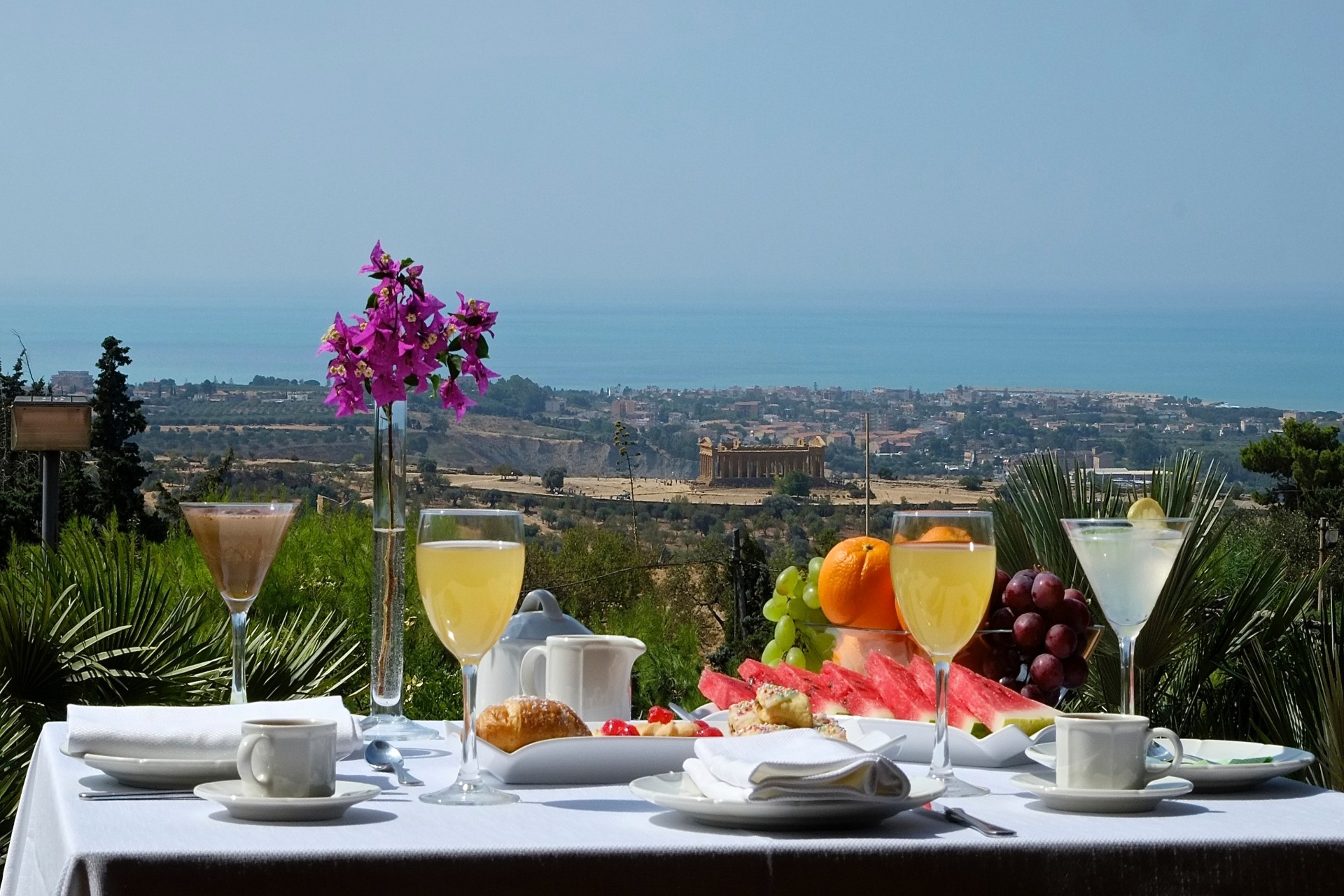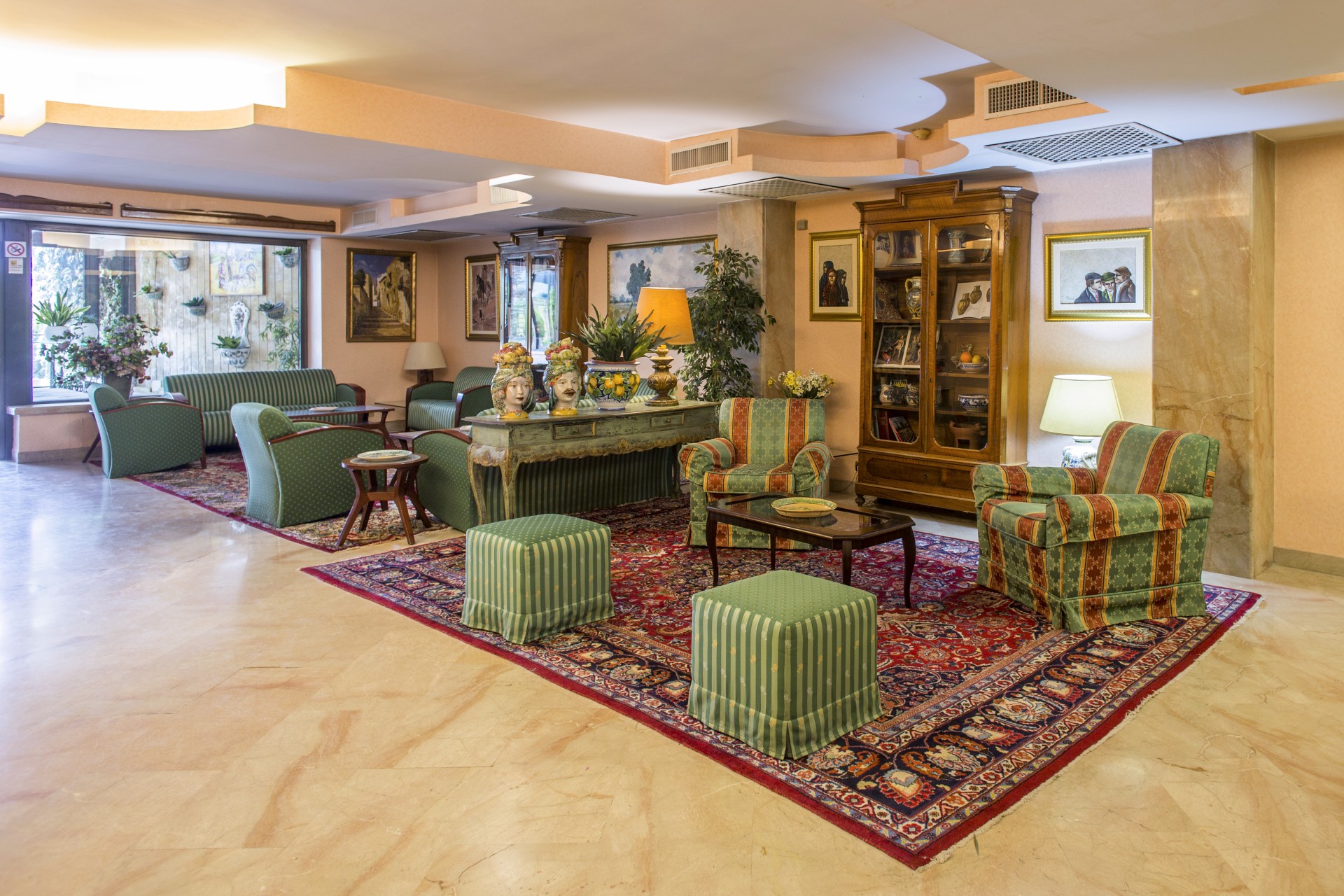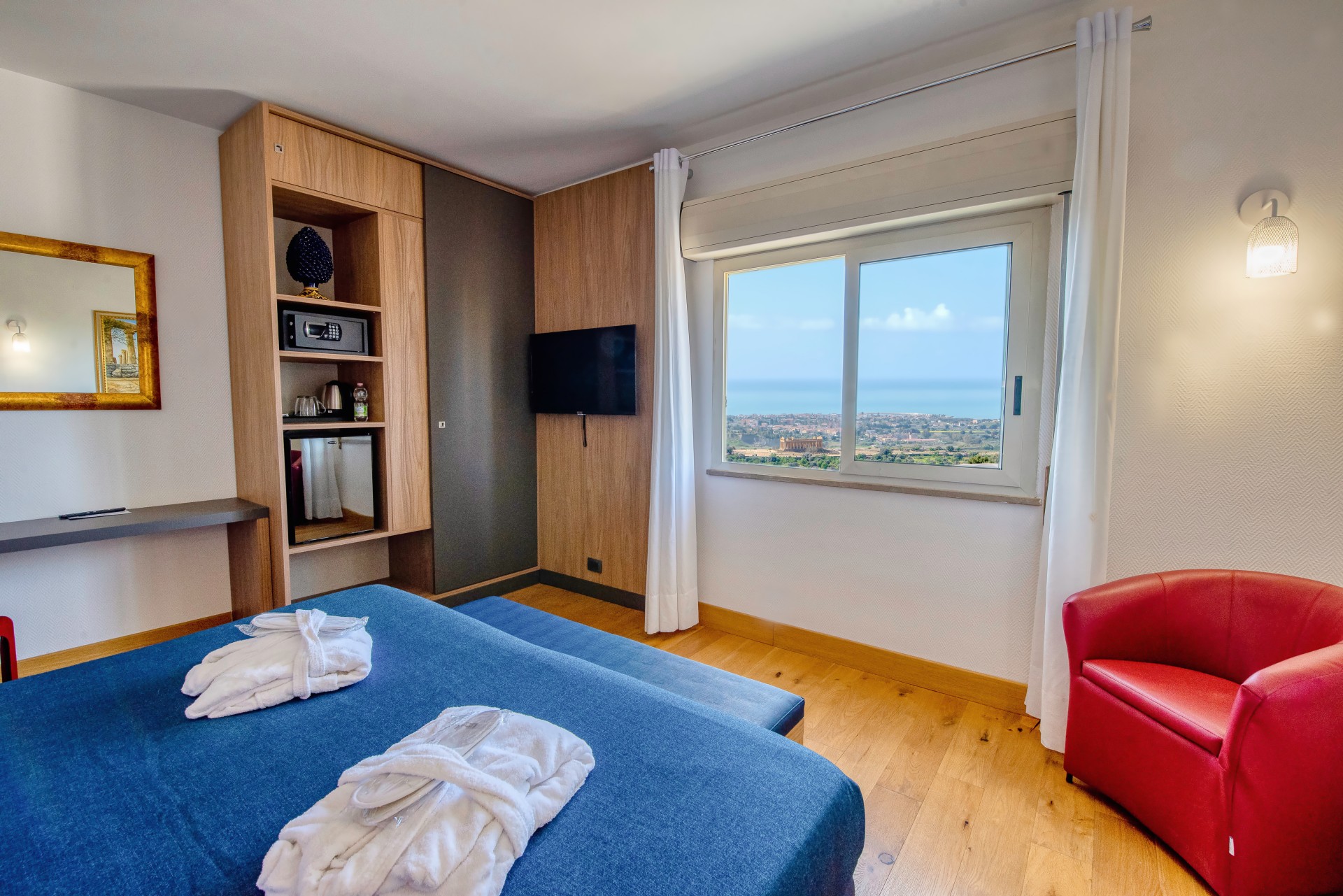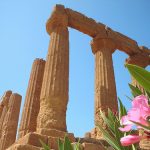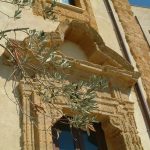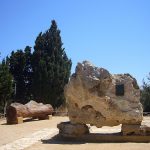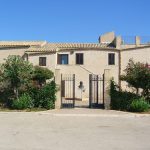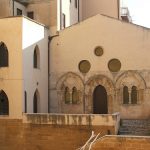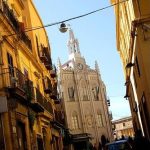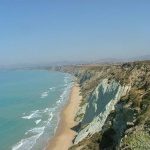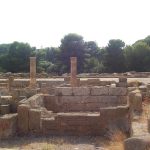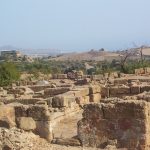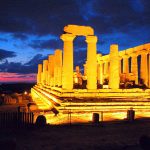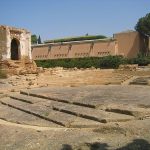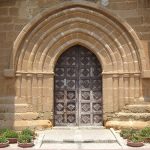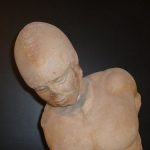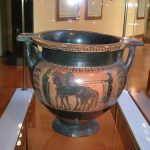
AGRIGENTO
Today’s Agrigento is heir to a powerful city of antiquity, the famous Akragas that, in the fifth century B.C. became one of the most important and flourishing cities in the Mediterranean, coming to be known as “the most beautiful city of the mortals” (Pindar). This beauty can be witnessed in the extraordinary finds kept at the Archaeological Regional Museum of Agrigento and the majestic Valley of the Temples, declared a UNESCO World Heritage Site. The heart of the archaeological park features the magnificent Kolymbetra Garden, the water reserve of the ancient Akragas. From the Roman era are the remains of the elegant villas of the Hellenistic-Roman Quarter. The modern city developed around two hills, the Rupe Atenea and the hill of Girgenti, where the medieval city emerged and evolved into what is the current center of town. In the historic center, the alleys and streets of Arab influence link prestigious buildings and prominent churches of later eras. The Via Atenea, lined with cafes, restaurants and shops, is the beating heart of the new and old Girgenti; the panoramic view there and near Viale della Vittoria displays the rich landscape of the Valley and the sea below; from Punta Bianca to San Leone (the seaside town which, together with the city center, features the bustling nightlife of the Agrigentini). Near Porto Empedocle, in Contrada Caos you will find the birthplace and museum of Luigi Pirandello: as well as a Literary Park dedicated to this playwright, poet and Nobel Prize Laureate for Literature.

LUIGI PIRANDELLO
In Contrada Caos, between Agrigento and Porto Empedocle, the House of Luigi Pirandello (1867-1936) emerges with a view to the “African” sea. It is now a museum, where you will find photographs, letters, manuscripts, relics and thousands of memorabilia from the famous writer. The ashes of the playwright (who was awarded the Nobel Prize for Literature in 1934) lie a short distance away in accordance with his will, which asked “may the cinerary urn be taken to Sicily and walled up in some rough side stone in the countryside of Girgenti, where I was born.” The House-Museum is the centerpiece of the Literary Park, where you can take a sentimental journey between the yards, streets, neighborhoods and landscapes of Agrigento – places, environments and atmospheres that still vibrate with the experience, descriptions and ideas contained in the operas of Pirandello.

CENTRO STORICO
The old town of Agrigento represents, with its narrow alleys, squares and courtyards, a typical Arab urban structure considered among the most authentic and best preserved in Sicily, though the most ancients architectonic occurences date back to the Norman period. At its summit is the Cathedral founded at the end of the XI century by San Gerlando, the first bishop after the Muslim domination and patron of the city. Having been repeatedly enlarged and restructured in the following centuries, today it is a wonderful fusion of different styles. Atop a wide staircase flanked by a massive bell tower dating back to 1470, the seventeenth-century silver urn of San Gerlando, funerary monuments of bishops and nobles, valuable paintings, frescoes, stucco and refined wooden ceilings are on display.
Adjacent to the Cathedral is the eighteenth-century Luchessian Library, which houses numerous and valuable volumes. The nearby church of Santa Maria dei Greci is so named because it originates from the Greek-Catholic rite. In the courtyard before the church you can still sense an atmosphere of Oriental mysticism. It was built on the ruins of the Temple of Athena, dating from the VI century B.C. In a small underground passage the remains of the basement are visible, while the colonnade is incorporated into the perimeter walls of the church. The Abbey of the Holy Spirit, founded by the Chiaramonte family at the end of the thirteenth century, still dominates on what was the expansion area of the city. Inside the church the stucco art of Palermitan sculptor Giacomo Serpotta, who lived and worked between the end of the 1600’s and the early 1700’s, is celebrated. The quadrangular cloister from the adjacent monastery has elegant windows and portals. Inside, the Sinatra Art Gallery holds a wonderful collection of paintings from famous Sicilian painters of the 1800’s, portraying the lush nature of Sicily.

The beaches
The sandy beaches along the coast of San Leone (the section of Agrigento born on the site of the antique Emporium) are a destination for leisure, amusement and holiday residence. With its shops, bars and beachfront restaurants along the seafront, it’s a very lively place during the summer evenings and weekends. Towards the East, a white and wild rocky outcrop called Punta Bianca reaches out to the sea surrounded by small bays and crystal clear waters.

Valley of the Temples
The Valley of the Temples, admirably managed by the “Parco Archeologico e Paesaggistico della Valle dei Templi”, since 1997 is one of the 50 Italian sites declared a UNESCO World Heritage Site. Here you will find seven Doric temples dating mainly to the fifth Century B.C. re aligned atop a magnificent cliff overlooking the sea. The Temple of Concordia stands out from the others, considered the best preserved Greek temple outside of Greece. The Valley also features the colossal ruins of the Temple of Zeus, the third largest Greek temple in the world, and the Temple of Dioscuri, a traditional symbol of the city. Outside the imposing external walls, south of the Valley, the small Temple of Aesculapius (Tempio di Esculapio) displays an original plan (pseudo double in antis). On the eastern slopes of rupe Atenea there is the medieval church of San Biagio, built on the foundation of the Temple of Demeter (tempio di Demetra), and the underlying rock shrine dedicated to the same divinity surrounded by a grove of eucalyptus in a quiet setting with a view of the great panorama of the Valley, a place still steeped in myth and mystery.
In the western extremity of the Valley of the Temples, near the temple of Dioscuri, you will find the Kolymbetra Garden, once a huge and ancient water reserve system from the Greek era, recovered and now managed by FAI, an organization who has made an oasis of shade and coolness, restoring the original plants and ancient crops of the zone. The Kolymbetra Garden is of enormous historic and environmental importance and is a place where nature and history merge into a single expression of Agrigento’s past and present beauty.
In a flat area, bound on the south by the Valley of the Temples, archaeological excavations begun in the 1950’s have uncovered a large tract of urban dwellings known as the Hellenistic-Roman Quarter. The Hellenistic-Roman Quarter covers an area of about 15,000 sq.m., and is among the best preserved in Sicily. In addition to dwellings and structures, a partial road layout of the village has been uncovered. The road consists of long axis “plateiai and stenopoi”, crossed squarely according to planning patterns dictated by Ippodamo da Mileto. The noble houses are arranged around a central peristyle and paved with elegant polychrome mosaics depicting geometric patterns, plant and animal drawings. These designs have determined the name of one of the homes, for instance, house of the gazelle.
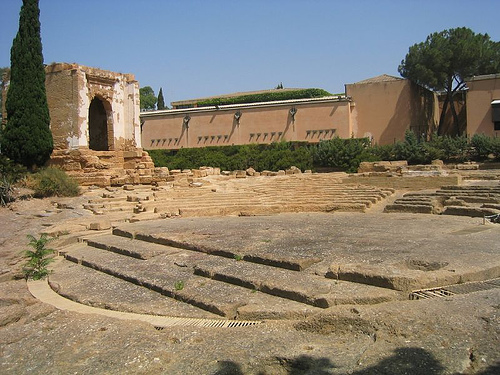
Archaeological Regional Museum of Agrigento
The Archaeological Regional Museum of San Nicola, established in 1967, one of the most prestigious in Sicily, holds an exceptional collection of finds from Agrigento and its territory, all displayed in a creative and visually pleasing way. The most outstanding are the vase collection, the dinos with the oldest representation of the Trinacria, the colossus Telamon (7.61 metres) from the Temple of Zeus, and the valuable sculptural work known as Efebo di Agrigento, the gargoyle in the form of a lion head, the Greek and Roman sarcophagi, and the magnificent crater from Gela depicting the Amazzonomachia and the Centauromachia, in a room entirely dedicated to it.
The museum is also home to numerous and prestigious cultural events: conferences, concerts, exhibitions. Its garden has recently been enriched with the sculptures of Greg Wyatt dedicated to Empedocle: distinguished citizen and philosopher of the Greek Akragas. In the immediate vicinity of the Museum you can find: the medieval Church of St. Nicola, hosting the sarcophagus of Fedra (one of the greatest expressions of Roman sculpture in Sicily), the ekklesiasterion with the characteristic form of an amphitheater (place of public meetings in the Greek Akragas) and the small Roman temple, traditionally called Oratory of Falaride. In front of the Museum there is access to the Hellenistic-Roman Quarter.l’ekklesiasterion dalla caratteristica forma che ricorda un teatro (luogo di assemblee pubbliche dell’Akràgas greca) e il piccolo tempio romano, tradizionalmente chiamato Oratorio di Falaride. Antistante il Museo vi è l’accesso al Quartiere Ellenistico-Romano.

